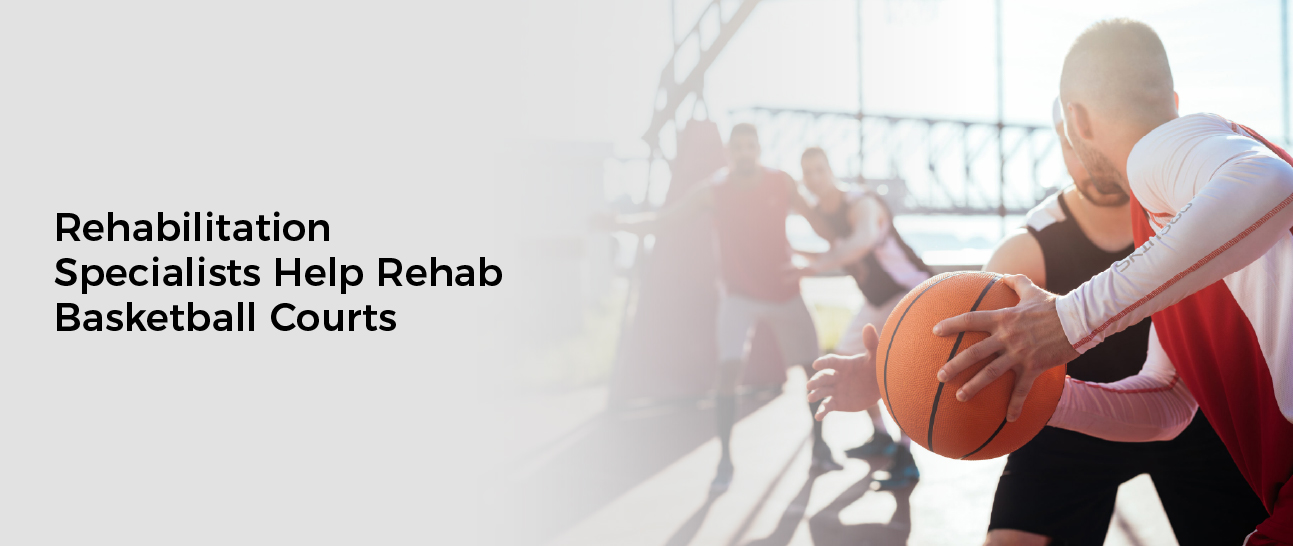When Westbrook High School graduate Treyjon Arsenault was killed a year ago, his love of the basketball courts at Fraser Field spawned a fundraiser and a community effort to rehab them. Thanks to grant funding from the American Recovery Plan Act, Elizabeth Township is transforming a neglected court into a fully functional, multipurpose recreation space.
Physical Therapy
A physical therapist is trained to help athletes with a variety of injuries. These can range from minor sprains to dislocated bones, and can affect athletes of all ages. Professional athletes often have designated physical therapists to treat their injuries.
Most athletes will need to attend several sessions of physical therapy to get the treatment they need to heal and recover. Each session is designed to help the athlete regain strength, movement and function. The treatment will also address any underlying dysfunction or issues that may have caused the injury in the first place.
One of the main reasons physical therapists work in rehab basketball court is to help players recover from sports injuries. Whether it is a common injury or a serious one, physical therapists can offer treatments that will decrease pain, improve range of motion and increase the speed at which an athlete can return to the game.
Licensed physical therapists have the option of becoming board-certified in a specific area of practice, such as orthopedics or sports rehabilitation. During this time, they develop a deeper understanding of the injury and can utilize advanced treatments and techniques to improve their patient’s outcomes.
Physical therapists often use exercises and hands-on manual therapy techniques in their treatment plans, so it is important to follow instructions closely. It is also a good idea to take home the treatment plan so that you can do the exercises on your own.
A physical therapist will often recommend stretches to increase flexibility and reduce pain. They will also be able to show you how to stretch your hips and knees before and after a basketball workout, and will know how to strengthen muscles in order to improve their ability to move efficiently during the game.
Sports Medicine
Sports medicine focuses on helping people improve their athletic performance, recover from injury, and prevent future injuries. Health workers who specialize in sports medicine treat athletes of all ages, as well as the general population. They can work in primary care, nursing, physical therapy, or a number of other specialties.
The field of sports medicine is a rapidly growing healthcare career. It is a great way to help people enjoy a healthier lifestyle and a higher quality of life.
Many careers in the field of sports medicine require advanced degrees, including a doctoral degree. This is particularly true for physicians, physical therapists and team physicians.
According to the Bureau of Labor Statistics, employment for physical therapists, occupational therapists and team physicians is projected to increase 15% from 2019 through 2029, with the strongest employment growth predicted for those who work in the field of sports medicine.
In addition to clinical skills, sports medicine professionals must have strong organizational and interpersonal abilities to lead teams and meet deadlines. They also need excellent physical dexterity, which helps them provide therapy with minimal damage to their patients.
Some sports medicine professionals also use their medical training to conduct research on sports-related topics, such as the connection between brain function and athletic performance. This can be a rewarding and challenging career path.
For example, University Hospitals has a team of sports medicine experts who work to diagnose and treat athletes of all ages. Their goal is to keep athletes healthy and active for a lifetime, not just for the next game.
These physicians and surgeons often have extensive experience treating a wide range of sports injuries. They understand the specialized tests and imaging that are needed to determine whether surgery is necessary, and can expedite referrals.
Athlete’s Recovery
Athletes go through a lot of physical and mental battles during their rehabilitation, but they don’t have to face it alone. They have athletic trainers and doctors to guide them through their recovery process.
Having someone to talk with who understands what they’re going through is especially helpful. They also have to deal with their parents’ and coaches’ emotions. They have to know that their injury is temporary, and they will get better.
Furthermore, they need to be supported in their healing journey, and not feel judged for their injuries. Keeping them motivated will help them push through pain, setbacks, frustration and disappointment.
A rehab basketball court is a great place for an athlete to start their rehabilitation. This is because it’s a smaller environment than an actual game, and the athletes can feel comfortable and not judged for their injuries.
It’s also a great way to keep track of the athlete’s progress, and give them support in their healing journey. They can also show their friends and family that they’re still working hard to come back from their injuries, and that they aren’t just sitting around doing nothing.
In fact, many athletes are now using social media to document their recovery process. They’re often sharing the exercises they are doing and how they are preparing to return to play.
They can also post pictures and videos of their recovery, and it’s a great way for them to keep friends and fans updated on their progress.
Athlete’s Training
The sport of basketball requires a significant amount of skill, agility, and speed in linear, lateral, and rotational movements. To optimize these demands, athletes need sports performance programs that focus on building strength and power, optimizing movement quality and neuromuscular coordination, and preventing injury.
To improve an athlete’s overall fitness and reduce their risk of injury, sports therapists employ several on-field rehabilitation programs that replicate an athlete’s sport experience. These include functional retraining, dynamic strength & endurance training, and even specific sport-specific conditioning.
For example, a stand-out Duke University player underwent ankle rehab in the HydroWorx pool at Duke University’s athletic training facility (see FUGUE 20). He was able to move pain-free in the pool, which allowed him to return to play earlier than he would have without this added conditioning.
In addition to enhancing an athlete’s overall athletic performance, sports therapy can also help them regain skills that they have lost due to injury or poor technique. These tasks often include dribbling, passing, shooting, and other skills associated with the activity that may be missed due to an injury.
Rehabilitating these skills can be challenging for athletes who have experienced an injury. This can be especially difficult for athletes with shoulder injuries.
One of the best ways to rehabilitate these injuries is to add contact drills to an athlete’s recovery program. A common basketball drill that can be used to increase a player’s contact strength is the gauntlet exercise.
This drill involves the use of a handheld basketball pad to hit an athlete in the upper arms as they drive through the lane during play. It is an effective tool that can decrease the likelihood of ACL injuries in basketball.



![The Basics of Floater Basketball [A Beginners Guide]](https://sportsglimps.com/wp-content/uploads/2023/05/Artboard-892-copy-43-2.jpg)
